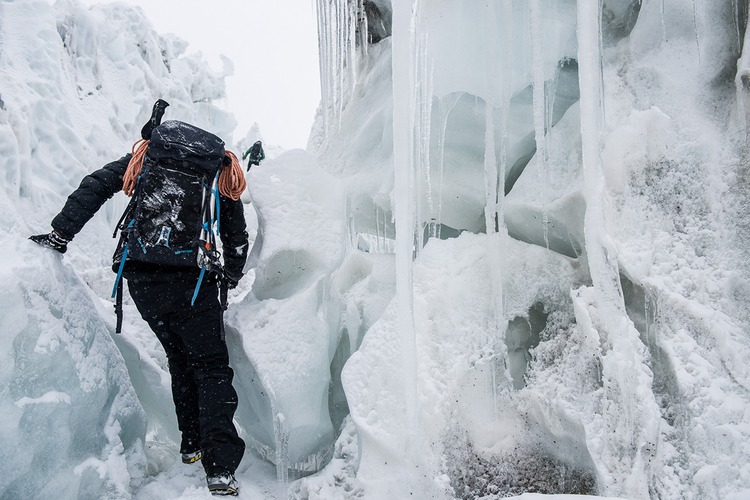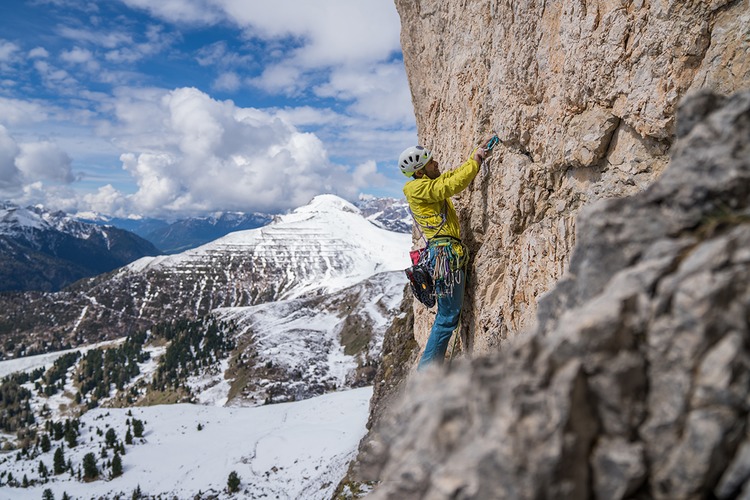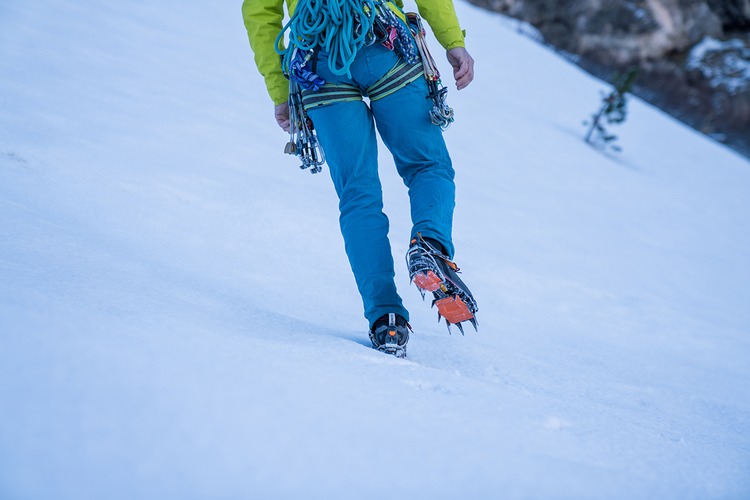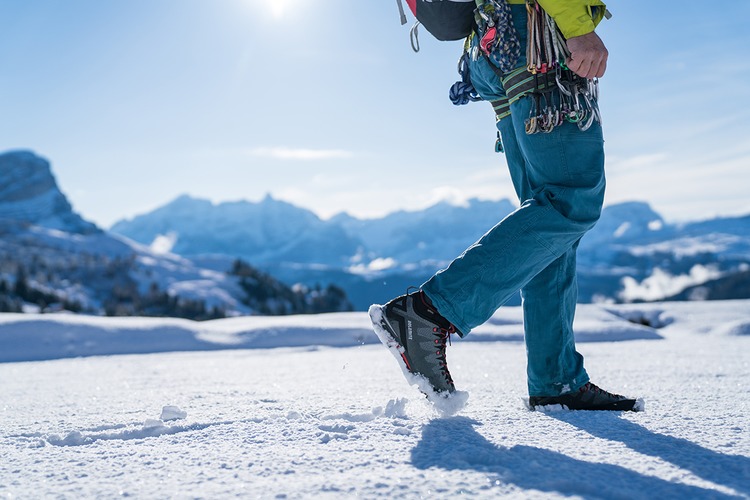How to choose the mountaineering boot
Thanks to the help and advices of the professional mountain guide Harald Fichtinger, we try to understand how to choose the perfect mountaineering boot and find the one that best suits our needs and activities.
Let’s introduce you the main features of these kind of shoes.
Sole Stiffness
The rigidity of the sole is certainly one of the most important characteristics to consider in a mountaineering shoe and can vary depending on the type of activity we are going to carry out.
For example, an ice climbing will require a very rigid sole, in order to facilitate climbing, without tiring or sore the foot. Instead, for long walks at high altitudes, a slightly softer sole is preferable.

Protection
The protection provided by the shoe is an essential aspect and represents one of the essential parameters for every climber. Even in this case, the level of protection provided by the shoe can vary according to the type of activity that will be practiced. Climbing on ice walls, for example, requires greater protection, as the shoe must be protected not only from cutting ice but also from possible damage and lacerations caused by crampons. The same can be said for Via Ferrata, since the variability of the routes involves the use of footwear with more robust and resistant uppers.
If the technicality of the ground is lower, it is possible to opt instead for a lighter shoe, in order to facilitate the rapidity of your movements, without excessive weights.

Ramponi
Mountaineering shoes should be suitable for crampons.
There are several types of crampons:
• Semi-automatic: they are the most common to find, they have a closure on the front of the shoe and a lever on the back. They are ideal for semi-rigid sole shoes.
• Automatic: they guarantee a firmer attack and are used together with rigid sole shoes. In general, they are used for ice climbing and dry tooling.
Remember: crampons do not work on a shoe with too soft soles. To optimize its functionality, always opt for a rigid or semi-rigid sole.

Waterproofing and insulation
Another essential feature for any mountaineering shoe is waterproofing. A shoe made with internal GORE-TEX lining keeps the foot dry and fresh, without making you sweat excessively.
On the other hand, isolation depends a lot on the type of activity you want to do. If you are practicing in winter, obviously it is necessary to have a shoe that offers an effective barrier against cold and bad weather, avoiding excessive heat dispersion. For summer activities, on the other hand, it is better to opt for a lighter and more breathable shoe.
Tip: The gaiters provide valuable help in providing insulation and waterproofing, not just in winter! Their use also becomes useful to protect themselves from rain or infiltration of sand and debris.

